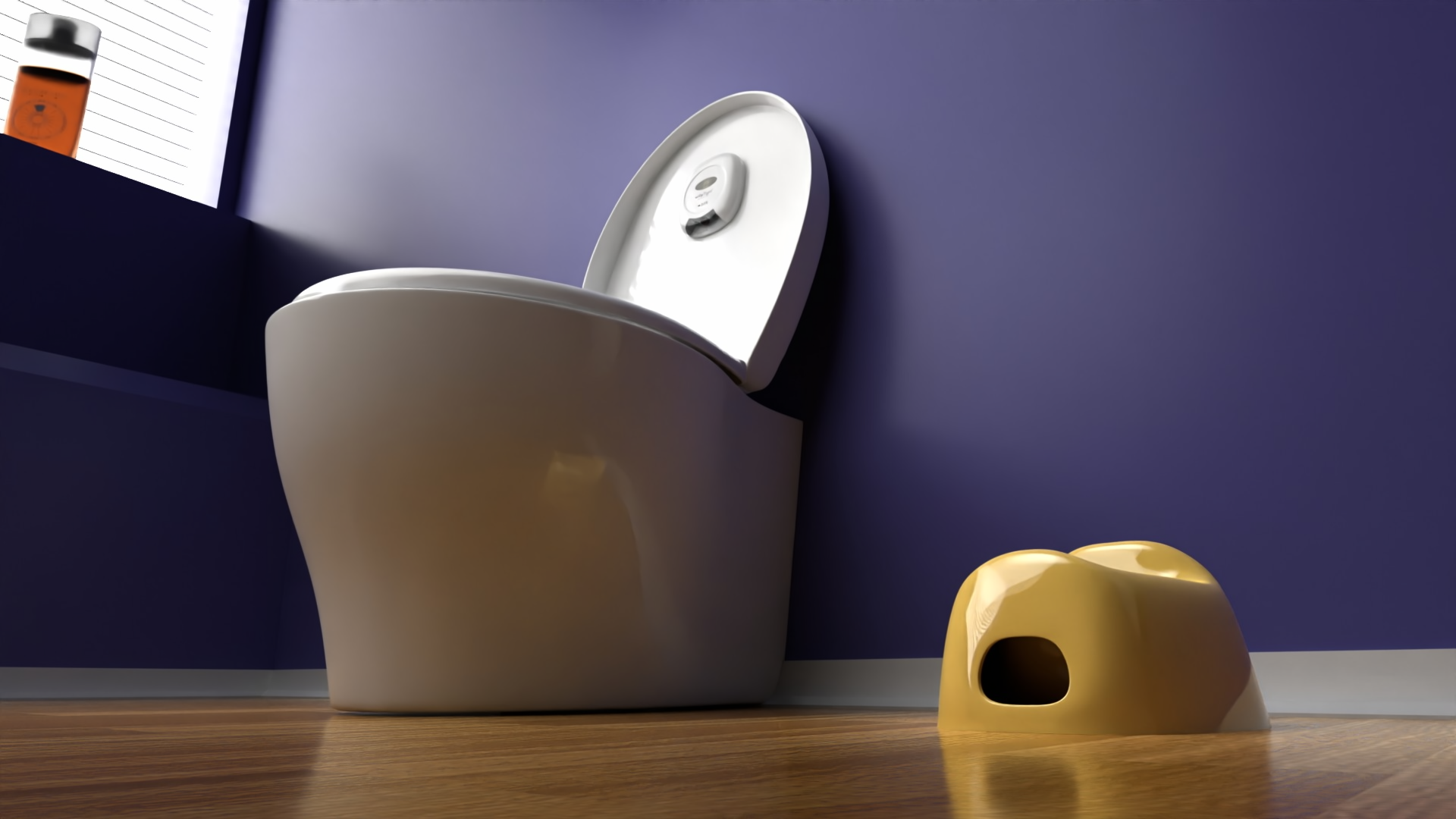Toilet training accidents and setbacks are inevitable – yet how parents respond to them makes the difference between continued progress and complete derailment. When progress goes backward, many families panic, increase pressure, or abandon strategies that were working, creating a cycle of frustration and failure.
The key to maintaining momentum through difficult phases lies in understanding that accidents are learning opportunities, not failures. Visual feedback systems that help children recognize patterns and successes prevent discouragement by keeping focus on progress rather than setbacks. When children can see what they’re doing right through immediate visual confirmation, temporary accidents don’t undermine their confidence or motivation.
This comprehensive guide reveals how to handle toilet training accidents positively, maintain momentum through challenging phases, and use setbacks as stepping stones to lasting success.
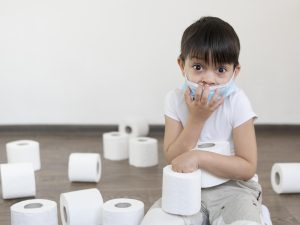
The Rodriguez family was celebrating. Their 3-year-old son Diego had gone two full weeks without a single toilet accident. They’d started relaxing their vigilance, even planning a trip to visit grandparents. Then, suddenly, Diego had three accidents in one day.
“We panicked,” admits mother Carmen Rodriguez. “We thought we’d done something wrong or that he was regressing. We started questioning everything – our approach, our timing, even Diego’s readiness.”
What the Rodriguez family didn’t realize was that Diego’s accidents were completely normal and actually indicated progress. He’d become so confident in his skills that he was pushing boundaries – waiting too long while playing, trying to make it to distant bathrooms, experimenting with independence. The accidents weren’t regression; they were part of the learning curve.
Once they understood this, the Rodriguez family shifted their response. Instead of increasing pressure or showing disappointment, they used visual feedback tools like the Willy Light to help Diego recognize patterns and maintain his confidence. Within days, Diego was back on track – and even more skilled than before the setback.
This story illustrates a crucial truth: how you handle toilet training accidents determines whether they become temporary bumps or permanent roadblocks in your child’s journey to bathroom independence.
Understanding Toilet Training Accidents: What’s Normal vs. Concerning
Expected Accident Patterns
Early training phase (Weeks 1-4):
- Multiple daily accidents are completely normal
- Learning curve requires practice and mistakes
- Physical control still developing
- Awareness building gradually
Middle training phase (Weeks 5-12):
- Occasional accidents during distraction or play
- Regression during illness, stress, or travel
- Testing boundaries and limits
- Environmental variations causing challenges
Late training phase (3+ months):
- Rare accidents in familiar environments
- Occasional issues in new situations
- Nighttime accidents still common
- Stress-related temporary regression
Normal Accident Triggers
Developmental and situational:
- Intense play or absorption in activities
- New environments or routines
- Illness or physical discomfort
- Major life changes (new sibling, moving, starting school)
- Sleep disruption or fatigue
- Emotional stress or anxiety
Learning-related:
- Misjudging urgency timing
- Overconfidence in bladder control
- Experimenting with waiting limits
- Testing independence boundaries
When to Be Concerned
Consult professionals if accidents include:
- No improvement after 3 months of consistent training
- Sudden regression with no identifiable trigger
- Signs of physical pain or discomfort
- Behavioral changes beyond bathroom issues
- Anxiety or fear developing around toileting
- Resistance that seems extreme or unusual
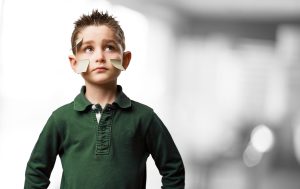
The Psychology of Accidents: Why Response Matters
How Children Interpret Accidents
Negative parent response teaches:
- “I’m a failure when I make mistakes”
- “Accidents mean I’m bad or disappointing”
- “Learning new skills should be perfect from the start”
- “I can’t trust my body or judgment”
Positive parent response teaches:
- “Mistakes are part of learning”
- “My parents support me through challenges”
- “I can recover from setbacks and keep trying”
- “Learning takes practice and patience”
The Confidence-Progress Connection
Children who maintain confidence during setbacks:
- Return to progress faster after accidents
- Show less resistance to toilet training overall
- Develop better problem-solving around bathroom needs
- Build resilience that extends beyond toileting
Children whose confidence is damaged by accident responses:
- May develop bathroom anxiety or resistance
- Experience longer, more difficult training periods
- Show increased regression frequency
- Develop negative associations with bathroom independence
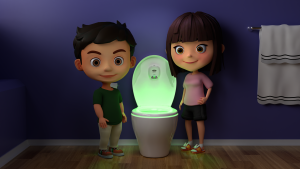
The Role of Visual Feedback in Maintaining Confidence
Visual feedback systems serve critical functions during setback periods:
Progress visibility: Children can see their successes aren’t erased by occasional accidents
Immediate reinforcement: Visual cues provide instant confirmation when they’re doing things right
Pattern recognition: Visual systems help identify what’s working versus what needs adjustment
Motivation maintenance: Seeing progress visually prevents discouragement during difficult phases
The Willy Light exemplifies this approach by providing consistent visual feedback about proper bathroom behavior, helping children maintain focus on what they’re mastering rather than dwelling on temporary setbacks.
The 5-Step Positive Accident Response Framework
Step 1: Pause and Regulate (Your Response First)
Before reacting to your child:
- Take a deep breath and check your own emotional state
- Remember accidents are normal and expected
- Consciously choose a calm, neutral response
- Set aside frustration, disappointment, or anger
Why this matters: Your emotional regulation sets the tone for your child’s experience. Children pick up on adult stress and disappointment even when unspoken.
Practical techniques:
- Count to five before responding
- Use a neutral statement like “Oops, looks like we had an accident”
- Maintain calm facial expression and body language
- Remember this is one moment in a long learning process
Step 2: Respond with Neutral Matter-of-Factness
Effective responses:
- “You had an accident. Let’s get you cleaned up.”
- “Oops, your body didn’t make it to the toilet this time.”
- “Accidents happen when we’re learning. Let’s take care of it.”
- “I see you didn’t make it. No problem, we’ll try again.”
Avoid:
- “Why didn’t you go earlier?”
- “I’m so disappointed in you.”
- “You know better than this.”
- “Big kids don’t have accidents.”
- Sighing, eye-rolling, or showing frustration
The goal: Treat accidents as mundane events requiring cleanup, not moral failures requiring correction.
Step 3: Include Child in Cleanup (Age-Appropriately)
Ages 2-3:
- Have child help carry wet clothes to laundry
- Let them get clean clothes from drawer
- Involve them in simple cleanup tasks
- Keep participation brief and positive
Ages 3-4:
- More active participation in cleanup process
- Responsibility without shame or punishment
- Natural consequences approach
- Building competence through involvement
Ages 4+:
- Significant involvement in cleanup
- Problem-solving discussion about prevention
- Responsibility emphasized positively
- Independence in managing consequences
Why involvement matters: Natural consequences teach responsibility without shame. Children learn that accidents require effort to address, motivating prevention.
Step 4: Identify and Address Patterns
Pattern analysis questions:
- What time of day do accidents typically occur?
- What activities precede most accidents?
- Are there environmental factors involved?
- Is there a physical or emotional pattern?
Common patterns and solutions:
Distraction accidents: Child absorbed in play
- Solution: Scheduled bathroom breaks during play, timer reminders, visual cue systems
Rushing accidents: Child waits too long then can’t make it
- Solution: Earlier recognition training, practice feeling body signals, more frequent opportunities
Environmental accidents: New places or situations
- Solution: Pre-emptive bathroom visits, familiarity building, practice in varied settings
Stress-related accidents: Changes or anxiety triggers
- Solution: Extra support during difficult periods, reduced pressure, emotional support
Step 5: Reinforce Success and Move Forward
After cleanup:
- Remind child of recent successes
- Express confidence in their ability to learn
- Acknowledge the learning process
- Return to normal activities without dwelling
Effective statements:
- “You’ve been doing so well with the toilet. This was just one accident.”
- “Remember yesterday when you made it to the bathroom three times? You’re learning!”
- “Everyone has accidents while learning. You’re getting better every day.”
- “Let’s see your visual chart – look at all those successes!”
The importance of moving on: Dwelling on accidents increases shame and anxiety. Quick return to normalcy maintains confidence and momentum.
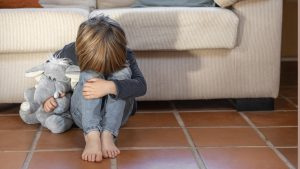
Maintaining Momentum During Setback Phases
Recognizing Different Types of Setbacks
Temporary regression (1-3 days):
- Often triggered by specific events
- Returns to baseline quickly with support
- Usually situational rather than skill-based
Response: Maintain consistency, provide extra support, address triggers
Learning plateaus (1-2 weeks):
- Progress seems stalled but not reversed
- Skills maintained but not advancing
- Often precedes developmental leaps
Response: Patience, consistency, celebrate maintenance of current skills
Significant regression (2+ weeks):
- Notable loss of previously mastered skills
- Multiple accidents daily after period of success
- May indicate underlying issues
Response: Assess for triggers, consider break if needed, seek professional input if concerning
Tools for Maintaining Momentum
Visual progress tracking:
- Charts that show overall success patterns
- Focus on cumulative achievements
- Celebrate improvements, not perfection
- Make progress visible and concrete
Immediate feedback systems:
- Tools like the Willy Light that provide instant positive reinforcement
- Help children recognize when they’re succeeding
- Maintain motivation through challenging periods
- Keep focus on proper behavior patterns
Routine consistency:
- Maintain scheduled bathroom breaks
- Keep expectations clear and consistent
- Avoid major approach changes during setbacks
- Provide predictable structure and support
Emotional support:
- Extra encouragement during difficult phases
- Validation of feelings and frustrations
- Confidence-building through other successes
- Patient, positive presence
Age-Specific Accident Response Strategies
Ages 2-2.5: Accidents Are Learning
Expectations:
- Multiple daily accidents are completely normal
- Learning to recognize and respond to body signals takes time
- Physical control still developing
Response approach:
- Maximum patience and neutrality
- Very brief cleanup involvement
- Focus on process, not outcomes
- Celebrate any bathroom successes enthusiastically
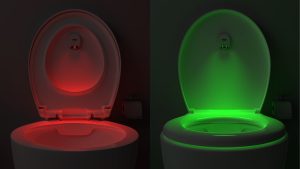
Tools that help:
- Simple visual cue systems that make progress concrete
- Scheduled bathroom breaks
- Positive reinforcement for attempts, not just successes
Ages 2.5-3: Building Consistency
Expectations:
- Gradual decrease in accident frequency
- Occasional accidents during absorption or play
- Learning to interrupt activities for bathroom needs
Response approach:
- Calm, matter-of-fact cleanup
- Pattern identification and problem-solving
- Natural consequences with support
- Emphasis on learning from mistakes
Tools that help:
- Visual feedback systems showing patterns
- Timer reminders during play periods
- Progress tracking that highlights improvements
Ages 3-4: Refining Skills
Expectations:
- Occasional accidents in new situations
- Testing independence boundaries
- Learning to manage different bathroom environments
Response approach:
- More child involvement in cleanup
- Discussion of prevention strategies
- Problem-solving partnership
- Confidence maintenance through setbacks
Tools that help:
- Advanced visual feedback for proper bathroom etiquette
- Responsibility charts that track competence
- Public restroom practice and preparation
Ages 4+: Addressing Persistent Issues
Expectations:
- Rare accidents in familiar environments
- Possible attention or resistance factors
- May indicate underlying concerns if frequent
Response approach:
- Serious discussion about patterns and concerns
- Active problem-solving partnership
- Assessment for medical or emotional issues
- Specialized support for persistent challenges
Tools that help:
- Independence-building systems
- Motivation enhancement strategies
- Professional consultation if needed
Gender-Specific Accident Considerations
Boys: Additional Complexity Factors
Boys often experience specific accident types:
- Aim-related accidents: Learning accuracy takes practice
- Position confusion accidents: Deciding sitting vs. standing
- Etiquette-related accidents: Forgetting seat management steps
- Distraction accidents: Higher activity levels affecting awareness
Effective responses for boys:
- Matter-of-fact cleanup involving them appropriately
- Target practice to improve accuracy skills
- Visual feedback systems like the Willy Light that teach proper seat etiquette
- Extra patience with multi-step bathroom processes
Girls: Different Accident Patterns
Girls commonly experience:
- Rushing accidents: Waiting too long then unable to manage clothing quickly
- Wiping-related issues: Learning proper hygiene technique
- Position-related accidents: Proper positioning on toilet seat
- Social anxiety accidents: Stress in public or unfamiliar bathrooms
Effective responses for girls:
- Support for clothing management skills
- Privacy and dignity maintenance during cleanup
- Confidence-building around public restroom use
- Patience with perfectionism tendencies
Preventing Discouragement: The Visual Feedback Advantage
Why Traditional Approaches Often Fail
Sticker charts and reward systems:
- Focus on outcomes rather than process
- Create pressure around perfection
- Lose effectiveness over time
- Don’t help children recognize patterns
Verbal reminders alone:
- Easy to tune out or ignore
- Don’t provide immediate confirmation
- Require constant parent involvement
- Can feel like nagging to children
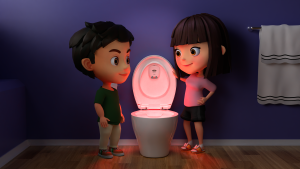
How Visual Feedback Systems Maintain Motivation
Immediate reinforcement:
- Instant visual confirmation when behaviors are correct
- No delay between action and feedback
- Clear cause-and-effect learning
Pattern recognition:
- Children see their own progress patterns
- Identify what triggers success vs. accidents
- Build self-awareness and control
Independence support:
- Tools provide feedback without parent involvement
- Build internal motivation rather than external approval
- Create sense of competence and control
Discouragement prevention:
- Focus stays on positive behaviors being reinforced
- Temporary accidents don’t erase visible progress
- Children maintain confidence through setbacks
The Willy Light exemplifies this approach – providing consistent visual feedback about proper bathroom behavior that helps children stay motivated and confident even during difficult accident phases.
When Accidents Indicate Bigger Issues
Medical Concerns to Watch For
Physical symptoms requiring evaluation:
- Pain or discomfort during urination or bowel movements
- Blood in urine or stool
- Constant urgency or very frequent urination
- Inability to control bladder after age 4-5 during day
- Consistent nighttime wetting after age 6-7
Behavioral red flags:
- Holding urine or bowel movements to painful extent
- Extreme anxiety or fear around bathroom use
- Accidents paired with aggressive or regressive behaviors
- Significant personality changes
Emotional and Developmental Factors
Stress indicators:
- Sudden regression after mastery
- Accidents coinciding with life changes
- Emotional distress around toileting
- Withdrawal or anxiety in general
Response: Address underlying emotional needs, reduce toilet training pressure, provide extra support and comfort
Developmental considerations:
- Some children need more time due to individual development
- Medical conditions may affect toilet training timeline
- Sensory processing differences may require accommodations
- Learning disabilities might impact training approach
Success Stories: Turning Setbacks into Success
The Chen Family: From Panic to Progress
After weeks of success, the Chen family’s daughter Emma suddenly had multiple accidents daily. Instead of increasing pressure, they implemented positive response strategies and added visual feedback tools.
“The Willy Light helped Emma see she was still doing many things right – proper seat position, good bathroom habits,” explains mother Lisa Chen. “She could see her successes even when she had occasional accidents. Within a week, she was back on track and even more confident.”
Key insight: Visual feedback prevented discouragement by keeping focus on progress.
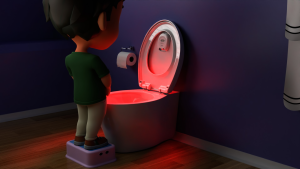
The Martinez Family: Pattern Recognition Success
Three-year-old Diego’s accidents always happened during active play. His parents used pattern tracking and visual reminders to help him recognize when he needed bathroom breaks.
“We realized Diego wasn’t being resistant – he genuinely couldn’t recognize his body’s signals during excitement,” notes father Carlos Martinez. “Once we understood the pattern, we could address it specifically without making him feel bad about accidents.”
Key insight: Neutral accident response allowed pattern identification and targeted problem-solving.
Practical Implementation: Your 30-Day Positive Response Plan
Week 1: Establish Response Framework
- Practice neutral accident responses
- Implement five-step response framework
- Begin accident pattern tracking
- Install visual feedback systems
Week 2: Pattern Analysis
- Identify common accident triggers
- Implement targeted prevention strategies
- Maintain consistent positive responses
- Celebrate pattern recognition progress
Week 3: Momentum Building
- Focus on overall progress, not individual accidents
- Enhance visual feedback and tracking
- Address identified patterns specifically
- Build confidence through small successes
Week 4: Solidification
- Maintain all positive response strategies
- Reduce accident frequency through prevention
- Celebrate learning and growth
- Establish long-term approach for occasional setbacks
Conclusion: Setbacks Are Stepping Stones

Toilet training accidents aren’t failures – they’re inevitable parts of the learning process. How you respond to them determines whether your child builds confidence and skills or develops shame and resistance. When progress goes backward temporarily, maintaining momentum requires positive responses, pattern recognition, and tools that prevent discouragement.
Visual feedback systems that help children see their successes even during difficult phases prove invaluable for maintaining motivation and confidence. Tools like the Willy Light provide the immediate, positive reinforcement that keeps children engaged in the learning process rather than discouraged by temporary setbacks.
Remember: every successfully toilet-trained child experienced accidents along the way. Your calm, positive response to these learning opportunities builds not just bathroom skills, but resilience, confidence, and problem-solving abilities that benefit your child far beyond toilet training.
Accidents are temporary. The lessons your child learns from how you handle them last a lifetime.
For additional guidance, explore our related articles on using visual cues effectively, teaching proper etiquette, boys’ specific challenges, and supporting children who need extra help.




